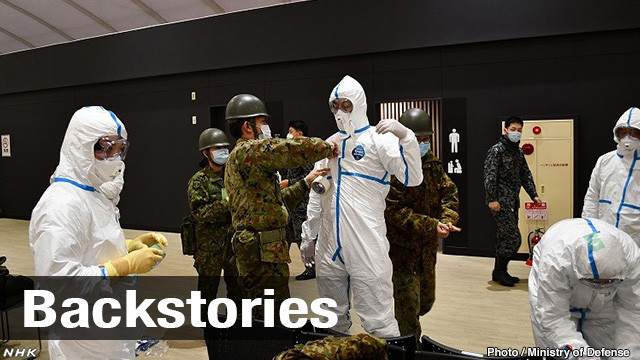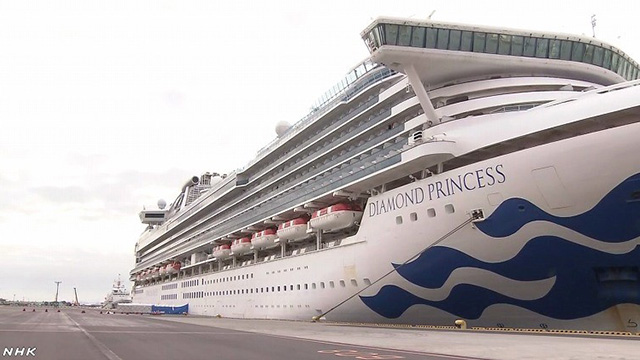
Unprecedented operation "scary"
"The name of the virus was new to me," says Machida Kazuhito, a senior Defense Ministry official. "To be honest, I was scared before stepping onto the scene."
Machida was second in command of the government's taskforce at the wharf where the cruise ship was docked in Yokohama. He was stationed there for 20 days.
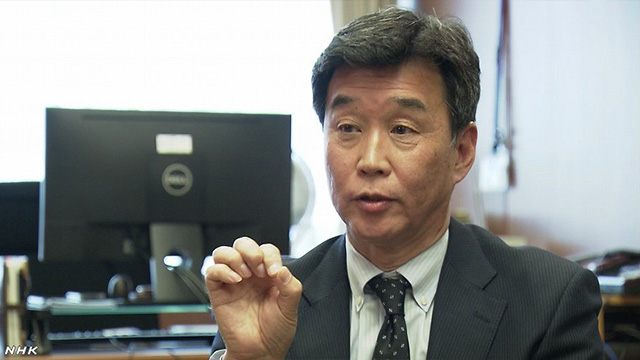
Communication issues
Machida says he was overwhelmed when he arrived at the scene on February 6. "Standing on the wharf, I felt the ship was extremely large, but when I went inside I found its interior so cramped."
The 290-meter long Diamond Princess has a large number of cabins located across eight decks. Members of the taskforce, unfamiliar with the complex inner structure, often found themselves confused about where in the ship they were. Machida says he was unable to find the exit several times and had to ask a crewmember for help.
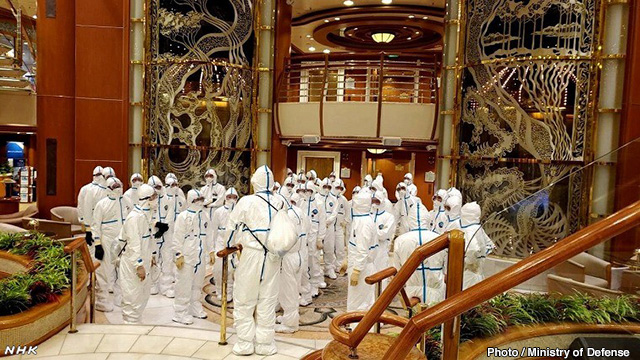
Mobile phones were useless in the ship. The steel interior blocked radio waves, and the structure has few openings. They tried using satellite phones, but could only catch signals when they were next to a window.
Machida had to keep shuttling back and forth between the ship and the taskforce's base at the wharf to mediate between senior health ministry officials and the ship's captain on board.
Eventually they resolved the issue by setting up a base station at the wharf and placing relay equipment throughout the vessel.
Overcoming the drug shortage
One pressing issue on board the ship was the dwindling supply of drugs. That was a critical problem for seniors and those with existing health problems. On February 7, the day after the start of the SDF's duty, one passenger unfurled a Japanese flag from a deck. On it was written the Japanese phrase for "Drugs short".
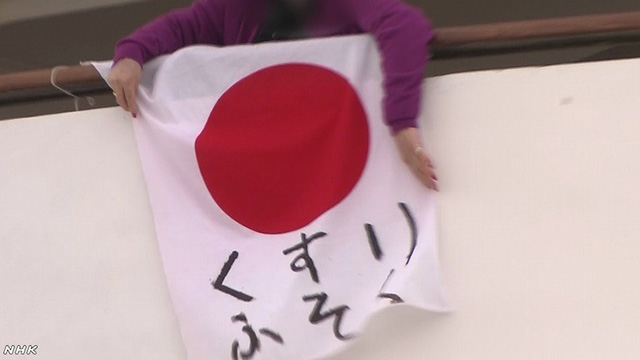
The team of pharmacists inside the ship was overwhelmed, so Machida asked the SDF to send more manpower.
Three SDF pharmacists arrived on February 10, and Machida says the situation improved
"We probably handled over 500 prescriptions in one day, delivered drugs to each cabin and provided advice on taking them."
Strict preventive measures taken by SDF
The SDF set its own standards to protect personnel from the virus. Some of the rules were stricter than those set by the health ministry.
The ministry said people involved in disinfection should use masks and gloves. But SDF members wore protective coveralls and two layers of gloves, which were attached to the coveralls by duct tape. The personnel also used shoe covers and goggles to block the virus.
After a quarantine officer from the health ministry was found to be infected, Defense Minister Kono Taro expressed his determination to prevent all SDF personnel from getting the virus. He ordered more rigorous preventive measures. As a result, SDF members started wearing gowns and caps even when sorting medicines.
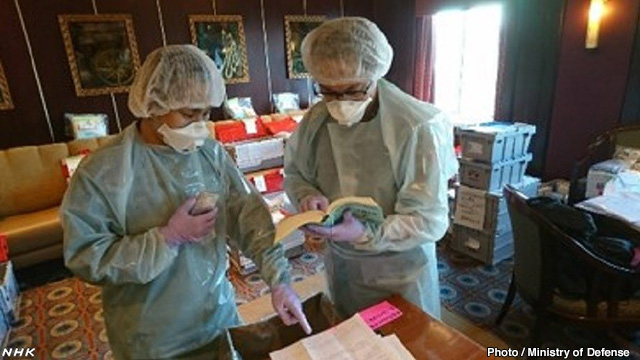
"The health ministry is highly knowledgeable about how to prevent infections. At the Defense Ministry many of us come from a completely different world. All we knew were the basics such as sanitizing ourselves if we touched something," says Machida.
"We work in groups. If one member gets infected, the entire group will follow. And if we caught the virus, we wouldn't be able to fulfill our mission of saving people. The rescuers should not become those who need rescuing."
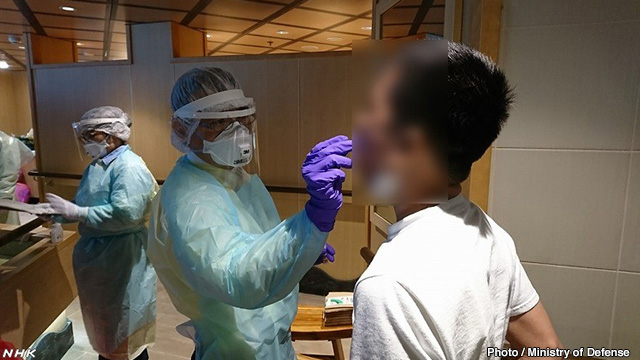
An unpleasant challenge for long journeys
SDF personnel also helped passengers and crew who tested positive for the virus but had no symptoms. They transferred them to medical facilities in other prefectures.
The SDF's ambulances are simpler than usual ambulances and have no partition between the driver and the patient, so makeshift partitions had to be installed. They were sealed with duct tape.
SDF personnel also used the tape around the hems of their coveralls and kept their goggles on when driving.
The need to remain fully protected presented one more challenge: how to go to the toilet on a long journey. Some patients were taken as far afield as Fukushima, and it was difficult for the SDF workers to take off their coveralls during the trips. Some of them relied on diapers for long drives.
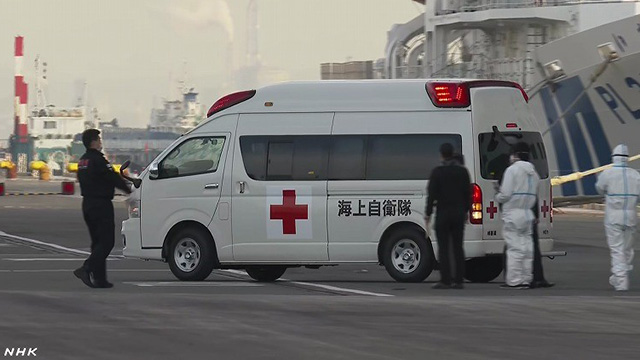
Makeshift accommodation
The SDF members stayed on ferries while they were on their mission.
Personnel were separated into two groups based on the likelihood of exposure. Each group used different entry routes, floors and bathrooms.
At the end of the mission to aid the Diamond Princess, not one SDF member had contracted the coronavirus.
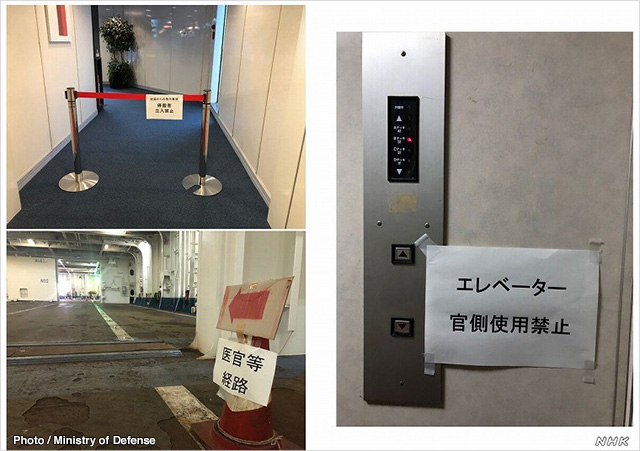
Lessons to be learned
After Machida finished his stint in Yokohama he went through a 14-day period of monitoring.
Machida says there were no manuals for handling an incident of this nature when they began, so it's important now to collate their experiences and draw up guidelines for handling any similar incident in the future.
